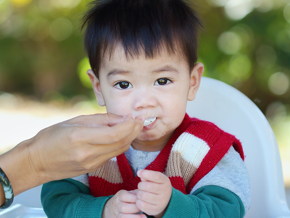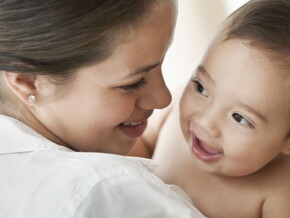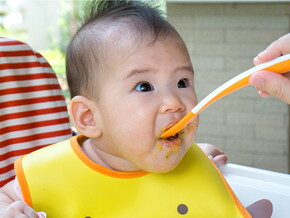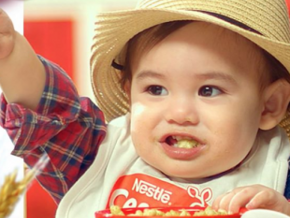
Heads Up, Parents: Immunization Schedule Now Includes Rabies Shots
Vaccines like MMR (measles, mumps, and rubella), polio, and hepatitis B remain. Learn more about the vaccines that play a crucial role in your child’s health.
Hey, parents, ICYMI, the childhood immunization schedule for 2025 includes a vital update. Rabies shots are now part of routine childhood vaccines.
Rabies is nearly always fatal once symptoms appear, but the good news is that it's 100% preventable with vaccination. Here's why this update matters and how following the immunization schedule helps keep your child safe and healthy.
How the Rabies Vaccine Protects Your Child

Kids are naturally playful and curious, and they often don't realize the risks of getting close to or petting animals. Remember, rabies doesn't just come from bites; it spreads through the saliva of infected animals via scratches or licks on broken skin.
The rabies vaccine helps your child's body fight the virus if they encounter an animal with the disease. It also helps with their medical treatment after being exposed to rabies.
According to the Philippines’ National Rabies Prevention and Control Program, rabies claims around 250 to 300 lives each year, with at least one-third of cases involving children under 15.
It’s why the childhood immunization schedule now includes the rabies vaccine to be administered to kids between the ages of 2 and 10 years.
How Vaccines Work in the Immunization Schedule
Following the immunization schedule protects children before exposure to potentially life-threatening illnesses. Each dose in the schedule, especially the vaccines for newborns, is designed to build or boost your child's immunity. It allows your baby to build strong defenses when they are at their most vulnerable.
Delaying or skipping vaccination puts your child at greater risk for serious health complications. It also endangers others, like newborns or those with weaker immune systems, since many of the diseases vaccines prevent are contagious.
These organizations release the immunization schedule annually:
- Pediatric Infectious Disease Society of the Philippines
- Philippine Pediatric Society
- Philippine Foundation for Vaccination
The schedule also includes the vaccines under the National Immunization Program (NIP) of the Department of Health (DOH).
Routine Childhood Vaccines

Here are the remaining vaccines in the immunization schedule, what they protect against, and when your child should receive them.
1. BCG (Bacillus Calmette-Guérin) Vaccine
What it protects against: Tuberculosis (TB), a bacterial infection that mainly targets the lungs but can also affect other parts of the body.
When should your child receive it:
- Single dose at birth or within your baby's first 2 months
2. HBV (Hepatitis B Vaccine)
What it protects against: Hepatitis B, a contagious liver infection that can lead to serious complications such as liver cancer.
When should your child receive it:
- First dose at birth
- Second dose between 1 and 2 months
- Third dose not earlier than 6 months
Your doctor may recommend a fourth dose if the last dose was given to your baby when they were less than 6 months or 24 weeks old.
3. Poliovirus Vaccine
What it protects against: Poliomyelitis or polio, a contagious viral infection of nerves and brain. The polio vaccine can come in two forms: inactivated poliovirus vaccine (IPV), given as shots, and oral polio vaccine (OPV) administered as drops.
When should your child receive IPV:
- First dose at 6 weeks, with the second and third doses at four-week intervals
- First booster at 6 months after the third primary dose
- Second booster between 4 and 6 years
NIP recommends OPV in three doses at 6, 10, and 14 weeks old.
4. DTaP-Hib-IPV (5-in-one vaccine)
What it protects against:
- Diphtheria: Bacterial infection that can block airways
- Tetanus (lockjaw): Bacterial infection that affects the brain and nerves
- Pertussis (whooping cough): Highly contagious respiratory infection
- Haemophilus influenza type B (Hib): Bacteria that cause pneumonia and meningitis
- Polio: A virus that can lead to paralysis and long-term disability
When should your child receive it:
- First dose between 6 and 8 weeks
- Second dose between 10 weeks and 4 months
- Third dose between 14 weeks and 6 months
- First booster between 12 and 18 months
- Second booster (DTaP-IPV) between 4 and 6 years
Tetanus and Diphtheria Toxoid (Td) / Tetanus and Diphtheria Toxoid and Acellular Pertussis (Tdap) booster doses should be given every 10 years for children with five DTP (Diphtheria, Tetanus, Pertussis) doses.
NIP provides Td vaccine at Grade 1 and Grade 7 under the school-based immunization program.
5. Pneumococcal Conjugate Vaccine (PCV)
What it protects against: Pneumococcal infections, which can lead to pneumonia, meningitis, and blood infections.
When should your child receive it:
- First dose between 6 weeks and 2 months
- Second dose between 10 weeks and 4 months
- Third dose between 14 weeks and six months
- First booster shot between 12 and 15 months
6. Rotavirus (RV) Vaccine
What it protects against: Severe diarrhea and dehydration caused by rotavirus infection.
When should your child receive it? This depends on the type of rotavirus vaccine (two- or three-dose series) your pediatrician will give you. But the minimum age starts at 6 weeks.
7. Influenza (Flu Vaccine)
What it protects against: Influenza (flu), a contagious viral infection that can lead to severe complications like pneumonia.
When should your child receive it: Your child can receive their first flu shot between 6 months and 8 years old. The vaccine is given in two doses, administered four weeks apart. After that, they will need one dose of the flu vaccine each year, beginning at 9 years old.
8. Measles Vaccine
What it protects against: Highly contagious viral infection with serious complications such as ear infections and pneumonia.
When should your child receive it: 9 months
If the single-dose measles vaccine isn't available, babies under 12 months can get the MMR (Measles-Mumps-Rubella) or MR (Measles-Rubella) vaccine instead. Just remember, after that, they'll need two more MMR shots starting when they turn 1 year old, following your baby's immunization schedule.
9. MMR (Measles-Mumps-Rubella) Vaccine
What it protects against:
- Measles: Viral infection that can spread through air and direct contact
- Mumps: Viral infection that causes swelling of the salivary glands
- Rubella (German Measles): A virus that causes fever, sore throat, and rashes
When should your child receive it:
- First dose at 12 months
- Second dose between 4 and 6 years
NIP provides MMR at 9 and 12 months and MR in Grades 1 and 7 via the school-based program.
10. Varicella Vaccine
What it protects against: Chickenpox, a highly contagious viral infection that causes itchy blisters and fever.
When should your child receive it:
- First dose between 12 and 15 months
- Second dose between 18 months and 6 years
11. JEV (Japanese Encephalitis Vaccine)
What it protects against: Japanese Encephalitis, a mosquito-borne virus that can cause severe brain inflammation.
When your child should get it:
- First dose at 9 months
- Second dose between 19 months and 3 years
12. HAV (Hepatitis A Vaccine)
What it protects against: Hepatitis A, a virus that affects the liver and spreads through contaminated food and water.
When should your child receive it:
- HAV intramuscular injection: 12 months as a two-dose series with a minimum interval of six months
- HAV subcutaneous injection: 18 months, single dose
13. HPV (Human Papillomavirus Vaccine)
What it protects against: HPV, a virus that can cause cervical and other types of cancers.
When should your child receive it:
- Between 9 and 14 years as a two-dose series with a minimum interval of six months
Be sure to consult your pediatrician if you have any questions or if your child needs catch-up vaccinations. You can start with this vaccine FAQ from ParenTeam's medical experts.
Importance of Immunization for Your Child's Health
As parents, you do everything you can to keep your children safe—from teaching them to look both ways before crossing the street to making sure they eat healthy meals. Vaccination is another powerful way to protect them. You’re shielding them from dangerous but preventable diseases.
Sticking to the recommended immunization schedule ensures your child gets protection at the right time and when they need it most. And when it comes to their well-being, prevention is always better than cure.
References
“Childhood Immunization Schedule 2025.” Pediatric Infectious Disease Society of the Philippines. Accessed March 16, 2025. https://www.pidsphil.org/home/wp-content/uploads/2024/11/2025-PIDSP-Immunization-Calendar.pdf.
Department of Health Philippines [DOH]. “National Rabies Prevention and Control Program Strategic Plan 2020-2025.” https://Rr-Asia.Woah.Org/App/Uploads/2020/03/Final-Mtp-Rabies_philippin…. Philippines: Department of Health. Accessed March 17, 2025. https://rr-asia.woah.org/app/uploads/2020/03/final-mtp-rabies_philippines.pdf.
World Health Organization: WHO. “DOH, UNICEF, WHO Highlight Key Strategies to Achieve 95% Child Immunization in the Philippines.” World Health Organization, January 30, 2025. Accessed March 17, 2025. https://www.who.int/philippines/news/detail/30-01-2025-doh--unicef--who-highlight-key-strategies-to-achieve-95--child-immunization-in-the-philippines.
Immunize.org. “CDC Recommended Schedules | Immunize.org,” November 23, 2024. https://www.immunize.org/official-guidance/cdc/rec-schedules/.
Vaccines & Immunizations. “Your child needs vaccines as they grow!,” November 22, 2024. https://www.cdc.gov/vaccines/imz-schedules/child-easyread.html.
World Health Organization: WHO. “Rabies,” June 5, 2024. https://www.who.int/news-room/fact-sheets/detail/rabies.




























